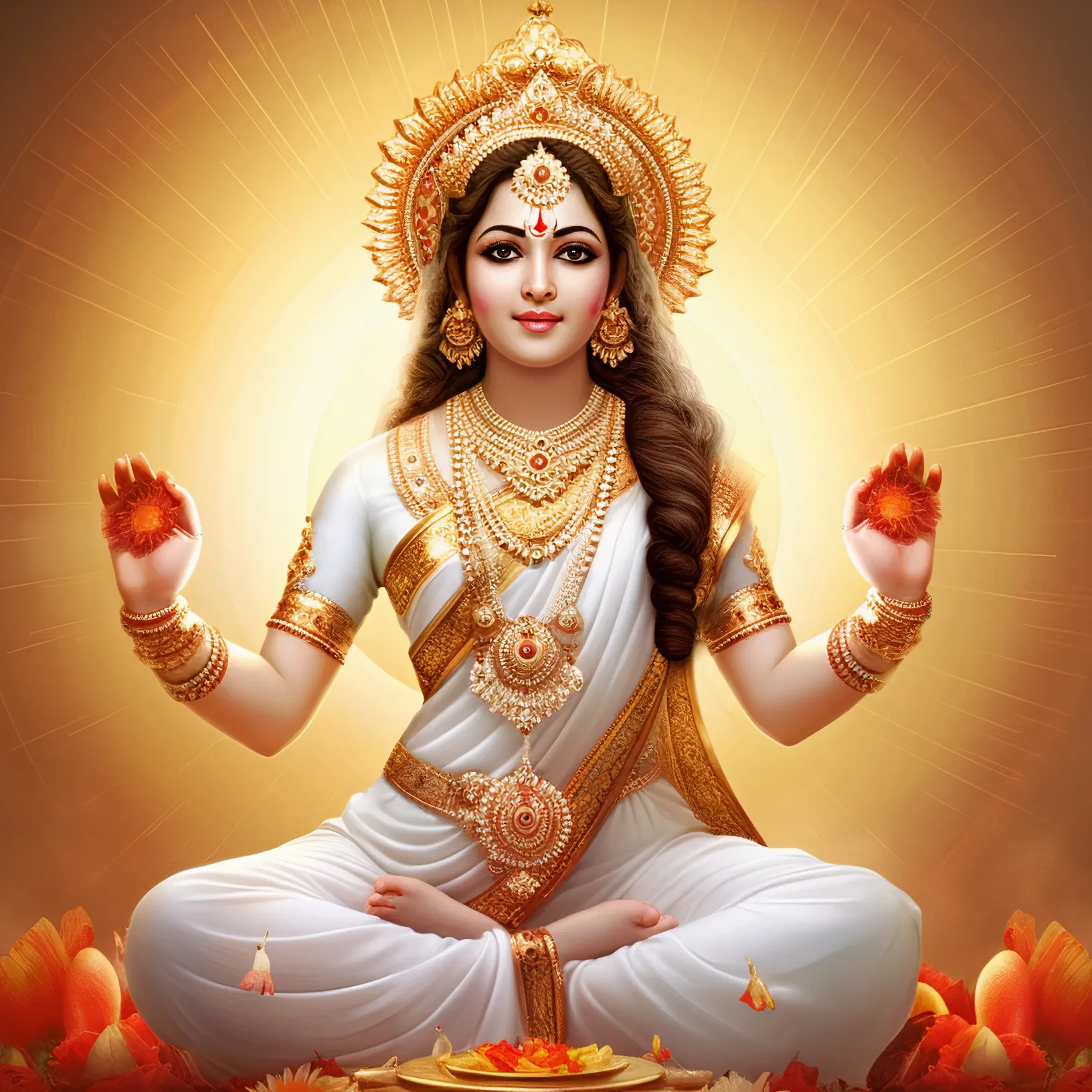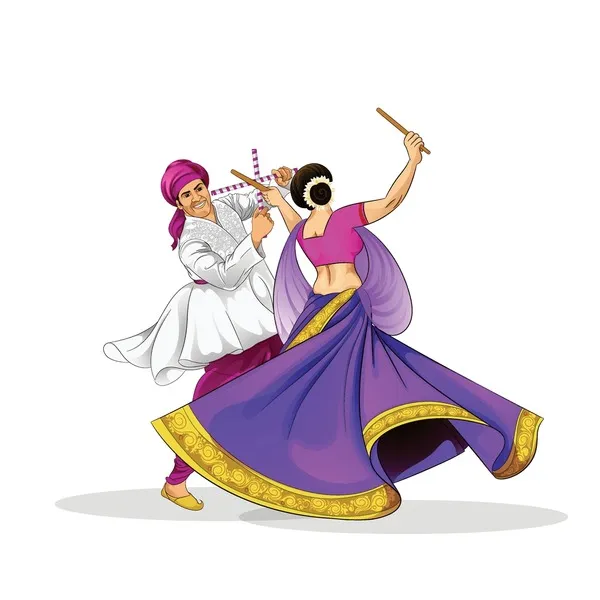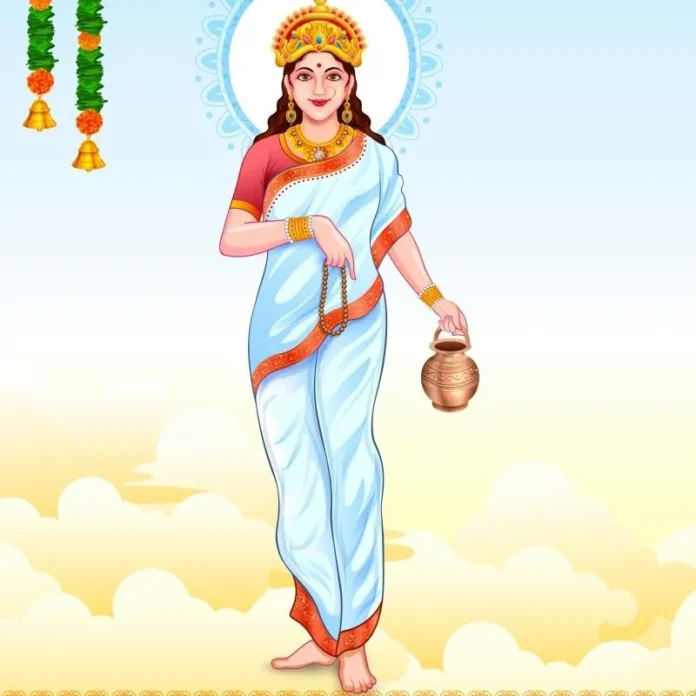Introduction
Navratri is the festival of colours and spirituality of Hindus, with nine holy days devoted to the divine feminine. Each day during Navratri signifies a different form of the Goddess Durga, marking the entry of fervour, rituals, and fasting. Devotees consider Navratri Day 2 as very significant because they worship Goddess Brahmacharini, an exemplar of austere virtues and spiritual wisdom. This day calls for even deeper introspection and is also a day to enhance spiritual self-discipline and devotion.
About Navratri and What It Represents
Navratri is the next most worshipped festival after Diwali in Hinduism. It is dedicated to the good triumphing over the evil aspect and consists of nine days of worship dedicated to the nine avatars of Goddess Durga. Every day represents a different aspect of life and spiritual growth.
Navratri Day 2 is devoted to Goddess Brahmacharini, who is the goddess of austerity and strength. Her name has derived from “Brahma,” which denotes penance, and “Charini,” that connotes follower. She has been an epitome of virtue and achievement of knowledge, and worship of her on this day beckons the devotee to move in the righteous path.

Story of Goddess Brahmacharini
The Hindu mythology worships Goddess Brahmacharini as the deity who practiced austerities and continued to focus on penance. In fact, she was so severe in her austerities that Lord Shiva accepted her as his consort. She reflects the strength, exertion, and faith of a person being focused for some cause.
Brahmacarini is seen holding a Rudraksha mala in one hand and Kamandalu in the other. Her serene photo represents serenity, and her calmness stimulates inner power. On Navratri Day 2, people believe that one gets the necessary energy to face the challenges of life by worshiping her, and devotees pray to seek her blessings for knowledge and wisdom.
Navratri Day 2 Rituals and Traditions
The rites of Navratri Day 2 are performed to worship Goddess Brahmacharini with authentic offerings, prayers, and devotional performances. Every rite depicts a meaning through which the spiritual bond between the devotee and goddess can be maintained.
Morning Puja and Prayers
The devotees begin the day by taking a holy bath and purifying the body and soul. The lighting of the lamp, offering flowers, sandalwood, rice, and all other sacred items, marks the initiation of morning puja.
An important part of the ritual is reciting the Brahmacharini Stotra or other mantras dedicated to the goddess to invoke her blessings for self-discipline and mental strength.
Brahmacharini Offerings
Flowers: The deity is offered white flowers that symbolise purity. Flowers like jasmine are highly revered during this day.
Prasad: Foods like sugar, fruit, and sweets made of milk are presented as prasad by devotees, establishing simplicity and restraint as principles.
Colors: White is the dress at Navratri Day 2 for a pure and single-minded concentration towards the respective spiritual power, as white is a symbol of peace and purity.
Fasting on Navratri Day 2
Fasting in Navratri is believed to be a great purification ritual which purifies the body as well as the mind. On the second day of Navratri, one fast with absolute devotion to gain peace in his mind and to attain the deity’s grace.

Fasting Rules and Regulations
The devotees observe different types of fasting. For example, only water, or fruits, or Satvik food is consumed and only one meal, like buckwheat kuttu ki roti, or sabudana khichdi of sago.
One cannot stay away from grains meat products, and processed foods as these things are assumed to not let the divine energy move for the puja.
Types of Fasting
Nirjala Fast: An absolute fasting in which neither water nor food is taken at all.
Phalahar Fast: Taking fruits, nuts, and milk.
Partial Fast: A partial fasting in which a meal is taken that is mainly prepared with potatoes or yoghurt only.
Spiritual Benefits of Fasting
Fasting in Navratri is believed to cleanse the body and the mind of an individual, thus enabling them to focus better on their devotion. Self-restraint in the form of fasting harmonizes the energy of the devotee with that of the divine, leading to focused thoughts and a better perception of the spiritual self.
Navratri Bhajans and Mantras for Day 2
Bhajans and mantras for the goddess Brahmacharini have helped lead to that spiritual ambiance that is needed during Navratri. They enable the devotees to connect with her in a more profound way, relating to the essence of the day.
Popular Bhajans
The Bhajan “Jai Ambe Gauri” is one which is extremely often sung during the time of Navratri as it does remind the goddess in all of her mentioned forms, namely including the Brahmacharini form.
“Brahmacharini Stotra” is specifically chanted to invoke goddess blessings that will help in the sustenance of diligence and strength.
Mantra Day 2
This is the day when the chanting of mantra creates a positive spiritual vibration. There are some of the most potent Navratri Mantras for Day 2 as listed below –
“Om Devi Brahmacharinyai Namah” – The goddess is prayed for self-discipline and knowledge.
Contemporary Navratri Day 2 Celebrations
In the present time, it is the Navratri Day 2 that is celebrated very enthusiastically not only in India but all over the world. Wherever it may be, in villages or cities, the dedication and celebrations are of the same nature.
India-Wide Celebrations
In Gujarat, the Navratri celebration holds great Garba and Dandiya dances as people come together in huge groups to perform folk dances in reverence to the goddess.
Although Durga Puja is a traditional event in West Bengal, people still follow the rituals of Brahmacharini during Navratri.
Global Celebrations
In Navratri, Indian communities around the world celebrate with religious events, cultural performances, and community gatherings. In the US, UK, and Canada, there are many temples that host Navratri programs, through which the diaspora is allowed to be in touch with its roots .
Decorating the House and the Altar during Navratri
It is also a time to prepare the house shrine, which is sacred during Navratri. On the second day, devotees perform a puja to Goddess Brahmacharini by deploying symbols, making their connection with the divine even more profound and stronger.
Home Decorations
At the altar, there are white flowers and sacred lamps. Devotees can add some Rudraksha beads and images of the goddess to the setup so as to usher peace.
Simple yet beautiful decorations defining spiritual energies of the day are preferred as they resonate with the purity of Brahmacharini.
Altar setup
The house altar is always arranged in a clean and a sacred portion of an abode, oriented towards the east direction. Devotees decorate it with images or idols of Brahmacharini Goddess, under which incense sticks, candles, and sacred offering trays are placed.
Conclusion
The Spiritual Significance of Navratri Day 2
Day 2 is dedicated to worshipping the austere form of Goddess Brahmacharini with pure devotion and self-discipline.she not only became the epitome of penance but also inspired many to choose a life that is virtuous, wise, and awakening. Secluding oneself in seclusion and austere as a service on this very day cultivates strength along with firmness within.
Therefore, for the rest of the days of Navratri, embracing the principles of Brahmacharini teaches us to align with divine power and once again fills our souls with serenity, devotion, and spiritual satisfaction.


